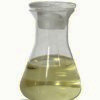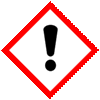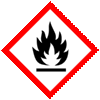Camphor Oil or Camphor Oil White Manufacturers, SDS MSDS Sheet |
Muby Chemicals of Mubychem Group, established in 1976, is the original manufacturers of Specialty Chemicals, Pharmaceutical Excipient, Fragrance Food & Flavor chemicals, Reagent Grade Chemicals, Shale Gas Fracturing Chemicals in India. Mubychem Group has several manufacturing facilities spread across Western India and world wide contacts and toll manufacturers. We are exporting globally to countries like USA, Canada, Europe, UAE, South Africa, Tanzania, Kenya, Egypt, Nigeria, Cameroon, Uganda, Turkey, Mexico, Brazil, Chile, Argentina, Dubai, Korea, Vietnam, Thailand, Malaysia, Indonesia, Australia, China, Germany, France, Italy, Portugal, Bangladesh, etc. The products are offered as per required specifications and in correct shape and size in mm or meshs or microns as specified by the buyer. The participating units have one or more accreditations like FDA - cGMP and GLP approval, ISO-9001 Certified, "REACH" Registered, ISO-14001, ISO/IEC 17025, ISO-22000, FSSC 22000, ISO 45001, Kosher Certified, Halal Certified, HACCP, FSSAI. We offer Commercial Pure & IP BP EP Ph Eur USP NF JP FCC Food Grade Analytical Reagent Grades of Chemicals |
| Bookmark this Web Site |
Search our website here:







Camphor Oil or Camphor Oil White: CAS Number: 8008-51-3, EINECS EC Number: yyyyy, Molecular Formula: yyyyy, Molecular Weight: yyyyy, FEMA Number: 2231, HS Code ---**
How big is your requirement or how small
We serve it all.
Specifications, Safety Data Sheet, Manufacturing process details, Wholesale retail prices, Uses
etc available on these pages for Contract Manufacturing for Camphor Oil or Camphor Oil White.
For SDS MSDS Sheet Click
SDS MSDS Sheet of Camphor Oil or Camphor Oil White Manufacturers
Camphor Oil
Camphor Oil White Essential oil Pure Grade Suppliers

Camphor Essential Oil or Camphor Oil White is widely used for aromatherapy and skincare purposes. It is produced from the wood, roots, and branches of the Camphor tree that is mainly found in India and China. It has a typical camphoraceous aroma and gets absorbed in your skin easily as it is a lightweight oil.
General Properties and Specifications of Camphor Oil or Camphor Oil White:
Appearance: Clear colorless liquid.
Relative density: 0.86 to 0.89
Refractive Index at 30C: 1.4650 – 1.4800
Camphor content: 12% maximum.
Contact
MUBY CHEMICALS
Ambernath Mumbai, Ankleshwar Gujarat, India
TEL: (OFFICE) +912223770100, +912223726950
Current Date Time in India GMT+5:30
e-mail: info@mubychem.com
USA, Canada, Mexico and other American
neighbouring buyers may
e-mail: us@mubychem.com
Call toll-free 1-877-682-9243 (1-877-MUBYCHEM)

Copyright and Usual Disclaimer is Applicable.
Last
21 May, 2024




Exporters to USA Canada UAE Europe South Africa Tanzania Kenya Uganda Egypt Nigeria Turkey Mexico Brazil Argentina Chile Dubai etc.
I shall pass through this world, but once. If therefore, there is any good that I can do, or if there is any favor that I can show to a fellow human being, let me do it now. Let me not defer or neglect it. For I shall not tread this way again
Camphor Oil or Camphor Oil White SDS GHS, Safety Data Sheet
MSDS Sheet, Material Safety Data Sheet 07-Jun-21
1. Product Identification
Product Name & Other Names: Camphor Oil or Camphor Oil White.
CAS No.: 8008-51-3
Relevant uses and uses advised against (if any): Industrial Manufacturing.
Suppliers: As per letterhead.
2. Hazards Identification
GHS, Globally Harmonized System Classification in accordance with 29 CFR 1910
Hazard Class and Category Code(s), Regulation (EC) No 1272/2008 (CLP):
Flammable liquids (Category 3) H226
Skin irritation (Category 2), H315
Eye irritation (Category 2), H319
Skin sensitization (Category 1), H317
Labeling according to Regulation (EC) No 1272/2008
GHS Label Elements  Irritant |
GHS Label Elements |
Signal Words: Danger
Hazard statements:
H226: Flammable liquid and vapor.
H315 Causes skin irritation.
H317 May cause an allergic skin reaction.
H319 Causes serious eye irritation.
Precautionary statements:
P210: Keep away from heat/sparks/open flames/hot surfaces – No smoking.
P233: Keep container tightly closed.
P240: Ground/bond container and receiving equipment.
P241: Use explosion-proof electrical/ventilating/light/…/equipment.
P242: Use only non-sparking tools.
P243: Take precautionary measures against static discharge.
P261: Avoid breathing dust/fume/gas/mist/vapors/spray.
P264: Wash … thoroughly after handling.
P270: Do not eat, drink or smoke when using this product.
P271: Use only outdoors or in a well-ventilated area.
P280: Wear protective gloves/protective clothing/eye protection/face protection.
P312: Call a POISON CENTER or doctor/physician if you feel unwell.
P303+361+353: IF ON SKIN (or hair): Remove/Take off immediately all contaminated clothing. Rinse skin with water/shower.
P304+340: IF INHALED: Remove victim to fresh air and keep at rest in a position comfortable for breathing.
P305+351+338: IF IN EYES: Rinse cautiously with water for several minutes. Remove contact lenses if present and easy to do – continue rinsing.
P370+378: In case of fire: Use dry chemical, foam, water spray, carbon dioxide for extinction.
P403+233+235: Store in a well-ventilated place. Keep container tightly closed. Keep cool.
P405: Store locked up.
P501: Dispose of contents/container to authorized agents only.
Classification according to EU Directives 67/548/EEC or 1999/45/EC:
Hazard symbols:
F Extremely Flammable
Xi Irritant.
R-phrases:
R 10 Flammable.
R36/38 Irritating to eyes and skin.
R43 May cause sensitization by skin contact.
3. Composition/Information on Ingredients
Product Name & Other Names: Camphor Oil or Camphor Oil White.
CAS No.: 8008-51-3
4. First Aid Measures
Always seek medical attention after first aid measures are provided.
Inhalation: Remove to fresh air. If not breathing, give artificial respiration. If breathing is difficult, give oxygen. Get medical attention.
Ingestion: Never give anything by mouth to an unconscious person. Get medical attention.
Skin Contact: Wipe off excess material from skin then immediately flush skin with plenty of water for at least 15 minutes. Remove contaminated clothing and shoes. Get medical attention. Wash clothing before reuse. Thoroughly clean shoes before reuse. Get medical attention.
Eye Contact: Immediately flush eyes with plenty of water for at least 15 minutes, lifting lower and upper eyelids occasionally. Get medical attention immediately.
5. Fire Fighting Measures
Flammability of the Product: Flammable.
Flash Points: 43C lowest reported cc literature.
Products of Combustion: Carbon dioxide, Carbon monoxide, fumes.
Explosion: Explosive in presence of heat.
Fire Extinguishing Media: Use dry chemical, foam, water spray, carbon dioxide. Flammable liquid and vapor. Vapors are heavier than air and may travel to a source of ignition and flash back. Vapors can spread along the ground and collect in low or confined areas. Never direct a water jet in the container in order to prevent any splashing of the product which could cause spreading of the fire. Cool containing vessels with water jet in order to prevent pressure build-up, auto-ignition or explosion.
Special Information: In the event of a fire, wear full protective clothing and NIOSH-approved self-contained breathing apparatus with full face piece operated in the pressure demand or other positive pressure mode. Uninvolved persons should evacuate to a safe place. At high temperatures under fire conditions, it may produce toxic or irritating fumes. Fire-extinguishing work is done from the windward and the suitable fire-extinguishing method according to the surrounding situation is used. Uninvolved persons should evacuate to a safe place.
6. Accidental Release Measures
Personal precautions, protective equipment, and emergency procedures: Avoid breathing dust/fumes/gas/mist/vapors/spray. Use individual protective equipment (waterproof boots, suitable protective clothing, safety glasses, etc.). Restrict unprotected personnel from the area. Prevent any contact with hot surfaces. Do not approach facing the wind. Do not touch the spilled material.
Environmental precautions: Do not let the product enter drains, soil, or water sources.
Methods and materials used for containment Cleanup procedures and Storage:
Small Spill: Avoid mist formation. Avoid breathing mist/vapors. Ensure adequate ventilation. Use appropriate tools to put the spilled solid in a convenient waste disposal container. Finish cleaning by spreading water on the contaminated surface and dispose of according to local and regional authority requirements.
Large Spill: Remove all sources of ignition. Provide proper ventilation. Keep people away from and upwind of spill/leak. Entry to non-involved personnel should be controlled around the leakage area by roping off. Absorb the material on a porous, inert material such as earth, sand, or vermiculite. Carefully sweep up the material without causing dust. Dispose of in accordance with local regulations.
Large liquid spillages should be contained by use of sand or another inert material. The spillage should be transferred to a suitable container and recovered or disposed of in accordance with local regulations. Because of the danger of spontaneous combustion, any combustible material, such as cloth, used for cleaning spillages, should be saturated with water, and disposed of promptly, preferably by incineration.
7. Handling and Storage
Precautions for safe handling: Apply according to good manufacturing and industrial hygiene practices. Ensure proper ventilation. Wash thoroughly after handling. Do not drink, eat, or smoke while handling. Avoid contact with skin, eyes, and clothing. Minimize dust generation. Avoid breathing dust/fumes/gas/mist/vapors/spray. Avoid contact with eyes, skin, and clothing. Keep container tightly closed. Avoid ingestion and inhalation. Use individual protective equipment (waterproof boots, suitable protective clothing, safety glasses, etc.). Prevent any contact with hot surfaces. Wear suitable protective clothing. In case of insufficient ventilation, wear suitable respiratory equipment. Keep away from heat/sparks/open flame/hot surfaces. -No smoking. Take measures to prevent the buildup of electrostatic charge. Use explosion-proof equipment. Wash hands and face thoroughly after handling.
Conditions for safe storage, including any incompatibilities: Store in cool, dry, and ventilated area away from heat sources and protected from sunlight in tightly closed original container. Keep air contact to a minimum. Do not leave the material container open. Store protected from light, heat, sparks and ignition sources and incompatible materials. Avoid contact with skin and eyes. Avoid inhalation of dust/mist/vapor. Do not store with incompatible materials like strong oxidizing agents. Store locked up.
8. Exposure Controls/Personal Protection
Airborne Exposure Limits: The product does not contain any relevant quantities of materials with critical values that have to be monitored at the workplace.
Ventilation System: A system of local and/or general exhaust is recommended to keep employee exposures as low as possible. Local exhaust ventilation is generally preferred because it can control the emissions of the contaminant at its source, preventing dispersion of it into the general work area.
Personal Respirators (NIOSH Approved): For conditions of use where exposure to dust or mist is apparent and engineering controls are not feasible, a particulate respirator may be worn. For emergencies or instances where the exposure levels are not known, use a full-face positive-pressure, air-supplied respirator.
Skin Protection: Wear protective gloves and clean body-covering clothing.
Eye Protection: Use chemical safety goggles and/or full face shield where dusting or splashing of solutions is possible. Maintain eye wash fountain and quick-drench facilities in work area.
Other Control Measures: Maintain good housekeeping in work area. Handle in accordance with good industrial hygiene and safety practice. Wash hands after handling.
9. Physical and Chemical Properties
Appearance: Clear colorless liquid.
Odor: Characteristic.
Odor threshold: Not available.
pH: Not available.
Relative density: about 0.86 to 0.89
Boiling Point: 160C to 165C literature.
Melting Point: -75C literature.
Flash Point: 43C lowest reported cc literature.
Auto-ignition temperature: Not available.
Decomposition temperature: Not available.
Upper/lower flammability or explosive limits: Not available.
Vapor pressure: Not available.
Vapor density: Not available.
Evaporation rate: Not available.
Flammability (solid, gas): Not available.
Partition coefficient: n-octanol/water: Not available.
Solubility: Not available.
Viscosity: Not available.
10. Stability and Reactivity
Stability: Stable under ordinary conditions of use and storage. Vapor/air-mixtures are explosive at high temperature.
Hazardous Decomposition Products: It emits Carbon dioxide, Carbon monoxide & Fumes.
Hazardous Polymerization: None reported.
Incompatibilities: Strong oxidizing agents.
Conditions to Avoid: Incompatibles, oxidizing agents, heat flame & light.
11. Toxicological Information
LD50 Oral Rat: 3730 mg/kg.
LD50 Dermal Rabbit >5000 mg/kg
Carcinogenicity: Not listed by ACGIH, IARC, NTP, or CA Prop 65.
Epidemiology: No information found
Teratogenicity: No information found
Reproductive Effects: No information found
Mutagenicity: No information found
Neurotoxicity: No information found.
12. Ecological Information
Toxicity to fish: Not available.
Mobility: Not available.
Persistence and Degradability: Not available.
Products of Biodegradation: Not available.
Toxicity of the Products of Biodegradation: Not available.
13. Disposal Considerations
Whatever cannot be saved for recovery or recycling should be managed in an appropriate and approved waste disposal facility. Processing use or contamination of this product may change the waste management options. State and local disposal regulations may differ from federal disposal regulations. Dispose of container and unused contents in accordance with federal, state, and local requirements.
14. Transport Information
DOT USA, TDG Canada & ADR/RID Europe:
Shipping Name: Camphor oil.
Hazard Class: 3, Packing Group: III
UN Number: UN1130
IMDG/IMO:
Shipping Name: Camphor oil.
Hazard Class: 3, Packing Group: III
UN Number: UN1130
IATA/ICAO:
Shipping Name: Camphor oil.
Hazard Class: 3, Packing Group: III
UN Number: UN1130
15. Regulatory Information
USA:
SARA 313 Components: No chemicals are reportable under Section 313.
SARA 311/312 Hazards: Fire Hazard, Chronic Health Hazard. See section 2.
California prop. 65: Contains no chemical subject to California Prop 65.
16. Other Information
European Labeling in Accordance with EC Directives:
H226: Flammable liquid and vapor.
H315 Causes skin irritation.
H317 May cause an allergic skin reaction.
H319 Causes serious eye irritation.
Hazard symbols:
F Extremely Flammable
Xi Irritant.
R-phrases:
R10 Flammable.
R36/38 Irritating to eyes and skin.
R43 May cause sensitization by skin contact.
Disclaimer:
**************************
Our company provides this MSDS sheet in good faith but makes no representation as to its comprehensiveness or accuracy. This SDS sheet is intended only as a guide to the appropriate precautionary handling of the material by a properly trained person using this product. The above information has been compiled from various sources and has the possibility of discrepancy and being out-dated information. Individuals receiving the information must exercise their independent judgment and do further search in determining its appropriateness for a particular purpose. In no case shall our company be liable to loss or damages by the product user.
**************************
















